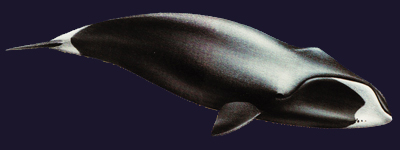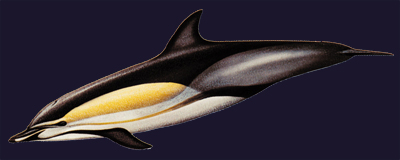|
The whales (order Cetacea) are mammals that evolved from land dwelling hoofed animals and became highly specialised for a life in aquatic environments. Typical mammal traits still shown by the whales include endothermy, lungs for breathing and the fact that females have mammary glands and nurse their calves.
In total, there are 83 extant species of whales divided into 14 families. Some species have previously been overexploited by the whaling industry and are therefore highly endangered. Whales are found in all seas, and the sperm whale and the killer whale have a wider distribution than any other mammal.
The order Cetacea is divided into two sub-orders; the toothed whales (Odontoceti) and baleen whales (Mysticeti). A marked difference between the two orders is that the toothed whales have jaws with teeth, while the baleen whales have so-called baleen in their upper jaws. These structures are used during feeding to filter small water dwelling organisms (plankton)
Most baleen whales are significantly larger than the toothed whales. The blue whale Balaenoptera musculus is the biggest and can reach a body length of more than 30 metres with a body weight of 130 tons. Baleen whales always have a double blowhole (“nose”) in contrast to the single one in toothed whales. Most of them (not right whales) also have four fingers, whereas toothed whales have five.
Whales swim by beating the tail fin up and down, using muscles attached to the posterior part of the vertebral column. These animals therefore don’t move by using the back limbs like other sea mammals (f. ex. seals, otters and polar bears).
The diet mainly consists of fish for the toothed whales and plankton (especially krill and other crustacea) for the baleen whales.
|



